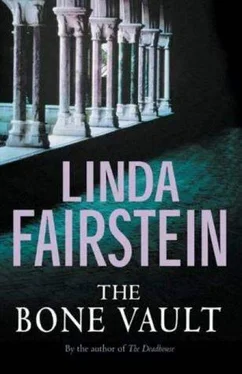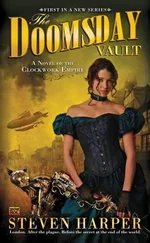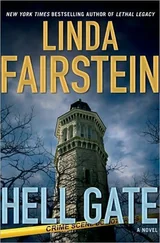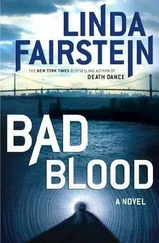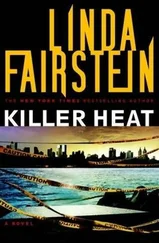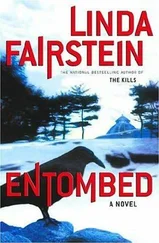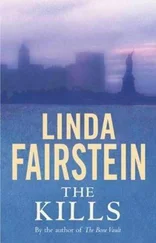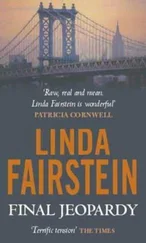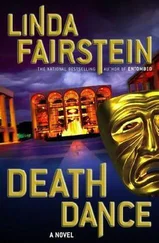Kestenbaum pointed to the door. “Turn right, there’s one in the supply closet at the end of the hallway.”
“Submit all this to the lab, but I want to do some checking on the sweater. Maybe we can find out whether she bought it herself, or if someone gave it to her as a gift.” I handed it to Mike to photograph, to record the detail of the cable stitching and the style of the collar and cuffs. The item had not been mass-produced. It was doubtful that many of these pale peach-colored knits had been sold. “This probably retailed for more than five hundred dollars.”
“On a museum intern’s salary? I don’t think my entire wardrobe between the time I was born and the age of thirty cost that much,” Mike said.
Kestenbaum picked up a white letter-sized envelope from his desk. “You’ll want to voucher this, too. I found it in the pocket of her slacks. Maybe it will tell you where Ms. Grooten left her belongings when she went for her last meal.”
I lifted the flap and took out a square red ticket, one inch in size, bearing the number 248. It looked like the stub of a receipt from a coat-check concession, somewhere between the morgue and Cairo.
“See any Hessians?” Mike Chapman called out to Mercer Wallace, who was leaning against the massive granite stones that formed a wall bordering the grouping of monasteries that had been moved from Europe to this rocky cliff three-quarters of a century ago. It was shortly after twelve on a sunny May afternoon, and we climbed the circular walk to join Mercer on the ledge overlooking the Hudson River.
“You are standing, my friends, on the highest piece of land on the island of Manhattan, accessible by the deepest subway station in the city-not that you would give a thought to any form of public transportation, Coop,” Mike continued. “Almost lost to the Brits in the affair of the outposts.”
Mercer turned to listen to the military history of this extraordinary piece of open public land on the northern end of Manhattan, his huge frame posed against the wide stretch of water below.
“General Washington left the garrison here and headed north, while Cornwallis surrounded this place with warships, Highlanders, British troops, and Hessians. They took the fort, killed most of the Americans, and were encamped here until these heights were refortified. That’s why the Long Hill outwork was renamed for William Tryon, the last English governor of New York.”
The Cloisters Museum stood on a spectacular hilltop in Fort Tryon Park, the last of the New York City parklands designed by Frederick Law Olmsted. John D. Rockefeller had given the city the buildings and more than sixty acres of unique urban land, with paved walks, terraces, and rocky terrain covering the area from the old ramparts of the original fort to the peak on which the imported ruins had been reset and enclosed in a contemporary setting.
My eyes swept the vista, leaving the river to follow the pathway that led directly down from our perch through the densely wooded area. Katrina Grooten had set off from the museum along one of those sloping walks on an evening last June, into the hands of a modern-day highwayman who had pulled her into the thickets that shielded them from view while he assaulted her.
“Hiram Bellinger is waiting for us inside.” Mercer led us around the impressive structure and down to the entrance that faced the parking lot. The Romanesque-style doorway, adorned with animals and birds, both real and imaginary, led to a series of arched steps. We were among only a handful of visitors, and I felt as though I had stepped back a few centuries into a medieval church as I made my way upward, passing the occasional window framed with tiny panes of leaded glass.
“Cool in here,” Mike said.
The thick walls, constructed of enormous pieces of stone, lowered the temperature at least ten degrees as we stepped inside. I’m sure Mike was wondering, as I was, whether this nouveau monastery’s chill would have been conducive to preserving a dead body. The machine-made wrought-iron hand railings were the only reminder that we had not entered a time warp.
At the top of the staircase a lone guard pointed the way to the curator’s office. Beyond the splendid marble capitals of the Cuxa Cloister, one of the five French monasteries re-created here, we crossed through a serene garden and over to the tower that housed the museum’s administrative wing.
I knocked on the door that bore the signHIRAM BELLINGER, CURATOR-MEDIEVAL ART, expecting it to be opened by a churlish old recluse who had spent decades with his nose in his antique manuscripts. Hiram Bellinger didn’t fit the description. He couldn’t have been any older than Mercer, perhaps forty-two at most. His khaki slacks, tasseled loafers, and cotton turtleneck under an open-collared button-down shirt gave him the look of a country squire.
Books were stacked everywhere around the large room, and from its setting high above the museum, I could see for miles up the Hudson.
“Hard to work on a day like this, so I’m happy to have the interruption. The medieval monks liked isolation, Ms. Cooper. Almost as much as I do. The Benedictines preferred mountaintops while the Cisterians chose remote river valleys. I’ve been fortunate enough to find the closest imitation of a monastic setting that any big city offers.”
Bellinger invited us to sit around a circular table in the middle of the room. He moved several open volumes of books to the windowsill and pushed other mounds of them to one side of the tabletop.
“How can I help you?”
“We’d like to talk to you about Katrina. Katrina Grooten.”
“I still can’t believe what I’ve heard,” he said, rearranging his papers and sitting next to me.
“Exactly what is it that you’ve heard?”
“That she’s dead. That she never actually left New York to go back home, which is what she told us she was doing.” He shook his head. “That someone killed her.”
“We intend to find out who. And why. We need to start with some information about Katrina. What she did, whom she knew, how she lived-”
“And who she pissed off.” Mike’s manner jarred with the refined calm of Bellinger’s aerie.
“That last would be a very short list. But I’ll give it some thought. Katrina could get under your skin if she found an issue, a passion that engaged her. But most of the time she was quiet, almost to the point of being withdrawn.”
“How long had you known her?”
“I hired her, in fact. Almost three years ago.”
“Where did you meet?”
“She showed up at the Met, résumé in hand, like most other graduate students with a degree in art history. They teach, they get more degrees, they work in museums.”
“There is a medieval art collection in the main building, too, isn’t there?”
“Of course. A very good one. That’s the reason Katrina applied there. But when her application was circulated, it wound up on my desk. Her interests suited my needs perfectly.”
“Why is that?”
“She had just completed an apprenticeship at the Musée des Augustins. Do you know it?”
None of us did.
“Toulouse, in France. It’s very much like the Cloisters, except it survived in its original site. The museum is an old convent building, quite sumptuous. In addition to the church buildings, it houses a remarkable art collection. Rubens, Van Dyck, Ingres, Corot. Most people are attracted to the art. Katrina immersed herself in the Gothic and Romanesque sculpture. She had a wonderful eye for medieval treasures. I invited her to join our operation.”
“How many of you are there working up here?”
“With support staff, just over a hundred. Librarians, bookshop personnel, security, janitorial. I’ve got an assistant curator, a good number of restorers, and then half a dozen interns, like Katrina.”
Читать дальше
